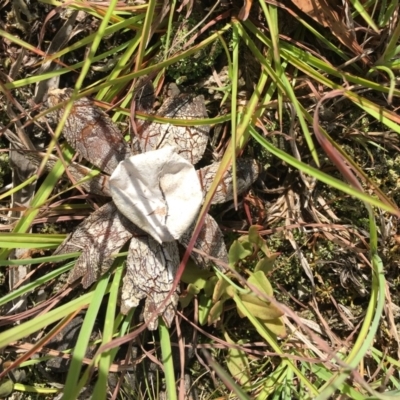Astraeus hygrometricus (Barometer Earthstar)
The mature fruit body consists of a thin-walled sac of spores atop a star-like base. At an earlier stage the spore sac is enclosed within a thick casing and at maturity that casing splits radially along several lines and the segments then fold out to create the star-like base. In dry conditions the arms fold inwards – but spread out again when wet. The arms are tough and somewhat leathery when spread out (and may even snap like wood when dry and curled up). The upper surface (when spread out) is polygonally cracked (much like ‘crazy paving’). The spore sac has a diameter of 1 to 3 centimetres and initially has a somewhat rough apical hole or tear and this may enlarge. Indeed, much of the spore sac may erode.
This has been reported to occur almost worldwide. In Canberra I have found Astraeus only where exotic trees are present, so perhaps those specimens are of an introduced mycorrhizal species or of a naturally cosmopolitan species. However, studies over the past decade have found that there are some specific regional species in the world and that many collections named as Astraeus hygrometricus are now other species. For now the name can be viewed as a convenient label on Canberra Nature Map until studies of Australian Astraeus specimens are carried out and show us what we have.
Look-alikes
At first glance this species could be thought of as a Geastrum and it has spent time in that genus. However, the tough, polygonally-cracked arms are distinctive. The arms of a dry Geastrum are very may be brittle, but they are not tough and woody! Furthermore, while much of a very old Geastrum spore sac may have eroded away, such erosion is more likely to happen fairly early with Astraeus.
Astraeus hygrometricus is listed in the following regions:
Canberra & Southern Tablelands | South Coast
Species information
- Astraeus hygrometricus Scientific name
- Barometer Earthstar Common name
- Not Sensitive
- Cosmopolitan
- Non-invasive or negligible
- Up to 617m Recorded at altitude
- Machine learning
































